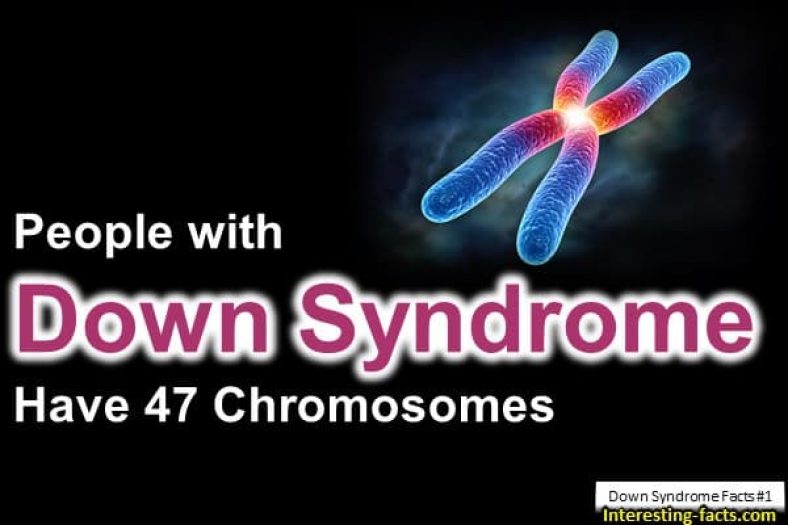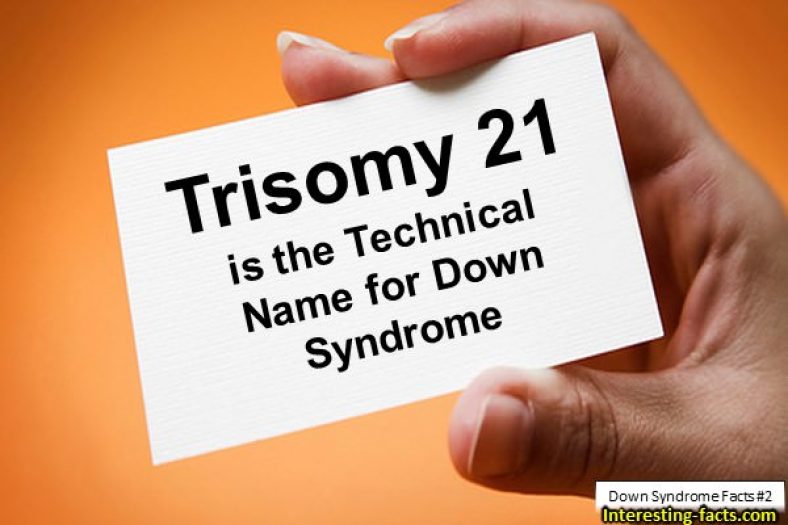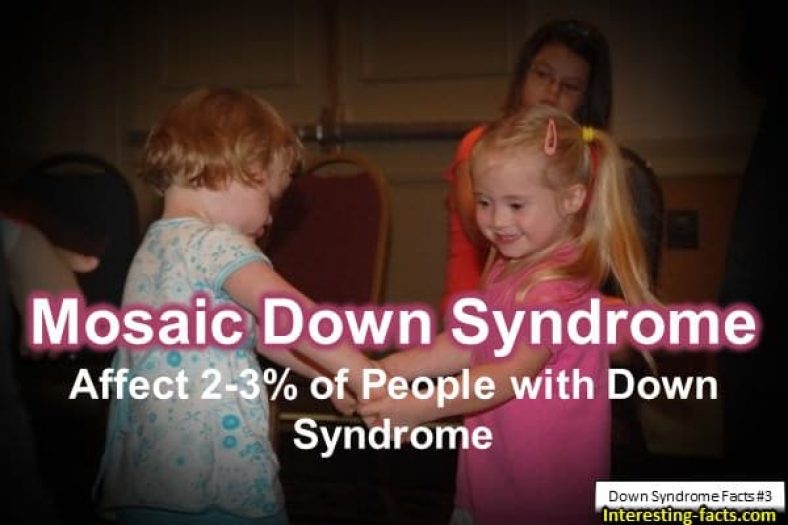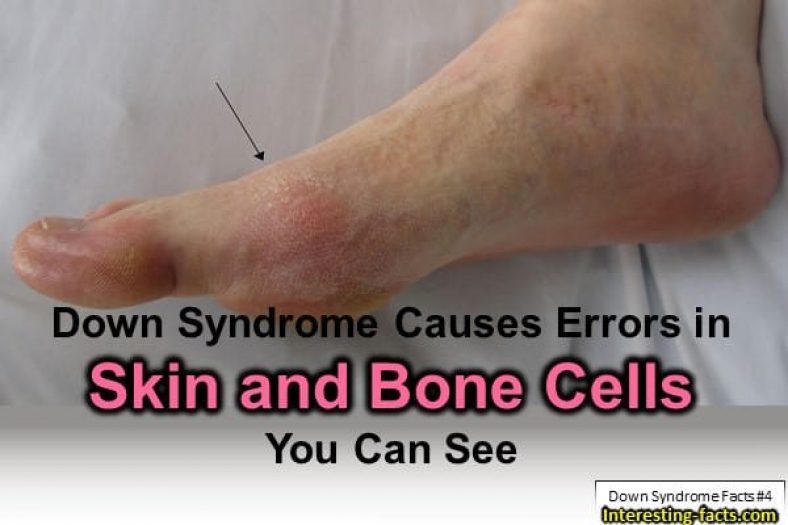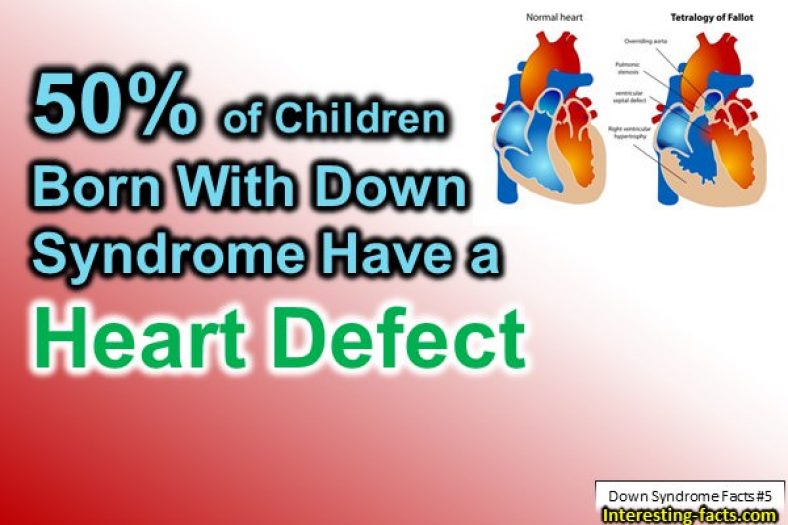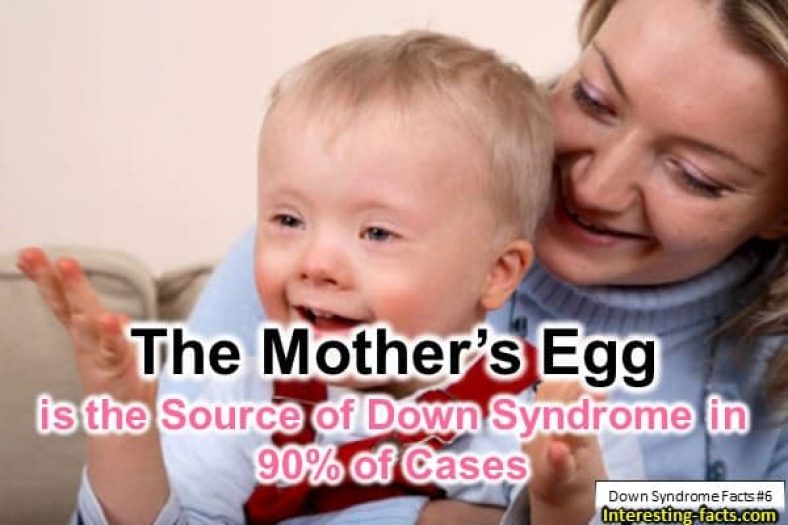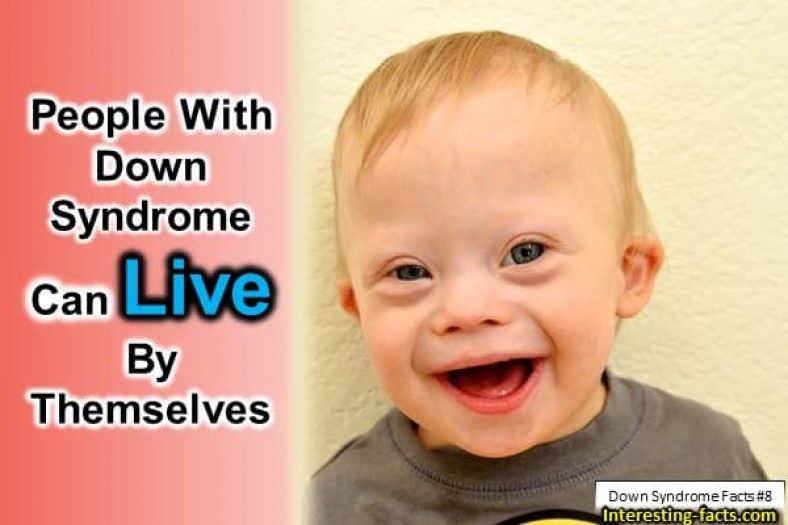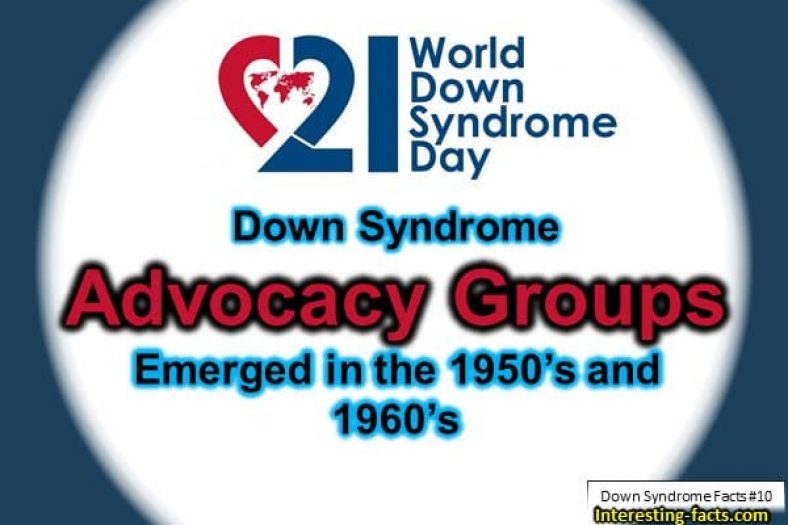Down Syndrome Facts – 10 Facts about Down Syndrome
People with Down Syndrome Have 47 Chromosomes
Down syndrome is a genetic condition. This means that the symptoms and behaviors associated with Down syndrome are the result of differences between the genes of a person who has Down syndrome, and one who doesn’t.
Genes control our development and the functions of our cells. Deoxyribonucleic acid, or DNA, is the chemical in our body that creates our genes. Our genes are organized in pairs called chromosomes. These chromosomes contain the instructions for our cells to grow, take in nutrients, expel waste and replicate.
Babies are typically born with 23 pairs of chromosomes, giving a total of 46 chromosomes. One of the most well-known Down syndrome facts is that children born with Down syndrome have an extra copy of one of their chromosomes. Therefore, they have 47 chromosomes instead of 46.
You might think that having an extra set of instructions would be a good thing. Unfortunately, this is not the case with Down syndrome. The extra copy of instructions causes the genetic program of the body to change, and this affects the person who has Down syndrome.
back to menu ↑Trisomy 21 is the Technical Name for Down Syndrome
The technical name or medical term for Down syndrome is Trisomy 21. In medicine, the term for having an extra chromosome is trisomy. One of the established Down syndrome facts is that people with Down syndrome have an extra copy of chromosome 21, and so the condition is officially known as Trisomy 21.
back to menu ↑Mosaic Down Syndrome Affect 2-3% of People with Down Syndrome
One of the surprising Down syndrome facts is that Down syndrome can be classified as any one of three specific genetic conditions. Trisomy 21, Translocation Down syndrome, and Mosaic Down syndrome are the three major types of Down syndrome.
The majority of people with Down syndrome have standard Trisomy 21. This means they have three copies of chromosome 21, instead of the typical two copies. Ninety-five percent of all people with Down syndrome have this type of Down syndrome.
Translocation Down syndrome accounts for somewhere between 2-3% of cases. This type of Down syndrome is when an extra part of chromosome 21, or an entire extra chromosome 21, is attached to another chromosome. When a chromosome moves and attaches to another chromosome, this is called translocation.
Mosaic Down syndrome also affects around 2-3% of people who have Down syndrome. In these cases, there may be cells with only two copies of chromosome 21, while other cells have the three copies associated with Down syndrome.
When trying to understand what happens when chromosomes are out of sequence, it may be helpful to think of the table of contents in a book being torn out and rearranged out of order. The symptoms that result from Down syndrome are the result of the human body trying to cope with genetic instructions and references that are out of sequence.
Each of the three types of Down syndrome can result in different symptoms for the person with the condition. Children with Mosaic Down syndrome may not show all the typical features of the disease, due to some of their cells having the usual number of chromosomes.
back to menu ↑Down Syndrome Causes Errors in Skin and Bone Cells You Can See
One of the Down syndrome facts is that people with Down syndrome have noticeable features of the condition. This is another reason that we should teach Down syndrome facts to kids. Kids can see when their peers appear different in some way. Instead of trying to avoid the issue, we should educate our children with Down syndrome facts.
Chromosomes control the cells that form our skin, bones and other parts of our body. For people with Down syndrome, these cells have “errors” in their chromosomes. These “errors” have an impact on the way the skin, bones, eyes and other parts of the body are formed.
People with Down syndrome may have a flattened face, a short neck and a tongue that hangs out of their mouth. They may also have some features that are noticeably smaller than in people without Down syndrome. For example, they may have small hands, small feet and small ears. The eyes of people with Down syndrome are often almond-shaped and slant upward. The irises of the eyes also tend to have white spots.
People with Down syndrome are also often shorter than other children and adults of the same age.
back to menu ↑50% of Children Born With Down Syndrome Have a Heart Defect
Some of the surprising Down syndrome facts relate to the symptoms of Down syndrome that aren’t immediately obvious. When we interact with someone with Down syndrome, we may notice that they are slower to speak, and that they may have difficulty forming complex words and sentences.
Difficulty communicating is one of the cruel Down syndrome facts as this apparent slowness is often the reason why people with Down syndrome are ridiculed. Many people with Down syndrome live relatively normal lives. They work, have friends, and have many of the same life experiences as those without the condition.
There are additional medical symptoms that aren’t immediately obvious when you meet someone with Down syndrome. These are some of the saddest Down syndrome facts. The “out of sequence” instructions in the cells of someone with Down syndrome also impact the development of their internal organs. For instance, half of all children born with Down syndrome have a heart defect.
People with Down syndrome also often experience hearing loss, and are more prone to ear infections. They also have trouble with their eyes. More than half of people with Down syndrome have some form of eye disease, such as cataracts. Part of the perceived slowness of people with Down syndrome may actually be due to the fact that they are not able to take in all the information in their environment due to problems with hearing and vision.
back to menu ↑The Mother’s Egg is the Source of Down Syndrome in 90% of Cases
There are certain factors that make it more likely for a child to be born with Down syndrome. One of the well-known Down syndrome facts is that women who are older than 35 years old are more likely to give birth to a child with Down syndrome.
While the age of the mother is a factor in the occurrence of Down syndrome, the exact cause of the condition is unknown. It is known that Down syndrome is present at the time of conception, or in the early development of the human embryo.
One of the little-known Down syndrome facts is that the mother’s egg is the source of the extra chromosome in 90% of the cases. In 4% of the cases, the father’s sperm is the cause and, in the remaining cases, the error occurs during the embryo’s growth.
back to menu ↑Down Syndrome Can Be Detected During Pregnancy with Special Tests
One of the positive Down syndrome facts is that doctors have gotten better at diagnosing the condition. There are a number of ways to test for Down syndrome during pregnancy. Some of these tests are screening tests that tell a woman whether or not her baby is at risk for Down syndrome.
When there is a high risk of Down syndrome, a diagnostic test will be performed that can confirm whether or not the baby has Down syndrome. These tests include testing for DNA fragments from the baby in the mother’s blood, testing the amniotic fluid that surrounds the baby in the womb, and testing the material in the placenta.
After birth, a doctor examines the baby for any visible signs of Down syndrome. At this time, a blood test can be taken directly from the baby. This test will reveal whether or not the extra chromosome 21 is present. Early diagnosis can help prepare parents and family members to deal with the challenges of Down syndrome.
back to menu ↑People With Down Syndrome Can Live By Themselves
People with Down syndrome are people like you and me. One of the most inspiring Down syndrome facts is that people with Down syndrome can live relatively normal lives, despite the challenges presented by their condition.
Some people with Down syndrome live by themselves and work in regular jobs. Being part of society is important for all people, especially those who face challenges. By supporting people with Down syndrome as productive members of society, we can teach our kids a valuable lesson about the importance of treating all people equally.
back to menu ↑People with Down Syndrome Only Live to Be 50 to 60 Years Old
It’s one of the sad facts of Down syndrome that people with the condition live shorter lives than people who do not have the condition. The average person with Down syndrome can expect to live 50 to 60 years with good health care.
This shorter life span is due to the many health problems that occur as symptoms of Down syndrome. The large numbers of people with Down syndrome who have heart defects often have the shortest life span.
back to menu ↑Down Syndrome Advocacy Groups Emerged in the 1950’s and 1960’s
Down syndrome is named after John Langdon Down who described the condition in 1866. Some people say Down’s syndrome, which is also an acceptable way to refer to the condition in general reference. In most medical contexts, the condition is called Down syndrome or Trisomy 21.
In the early 1900s, many people with Down syndrome were forced to live in group homes or care facilities. These facilities were often mental institutions where people with Down syndrome were forced to live with people who were psychotic or otherwise mentally ill.
The best Down syndrome facts have occurred in the last 100 years. In the 1950s and 1960s, some groups emerged that began to advocate for the fair treatment of people with Down syndrome. They sought to support the families of people with Down syndrome and to better educate the public on the condition.
Learning about new Down syndrome facts continues to this day. The more we understand, the better able we are to support people who have Down syndrome so they may live their lives as fully as possible.
Interesting Facts about Down Syndrome Summary
Down syndrome is a genetic condition, and as such, many Down syndrome facts can help us understand about genes and the way they work in our bodies. Interesting Down syndrome facts are a great way to teach kids about genetics.
When we teach kids Down syndrome facts, we can also help them to be more sensitive to their peers who have this condition. One of the Down syndrome facts is that this condition poses a challenge to the people who have it and the families that support them.

